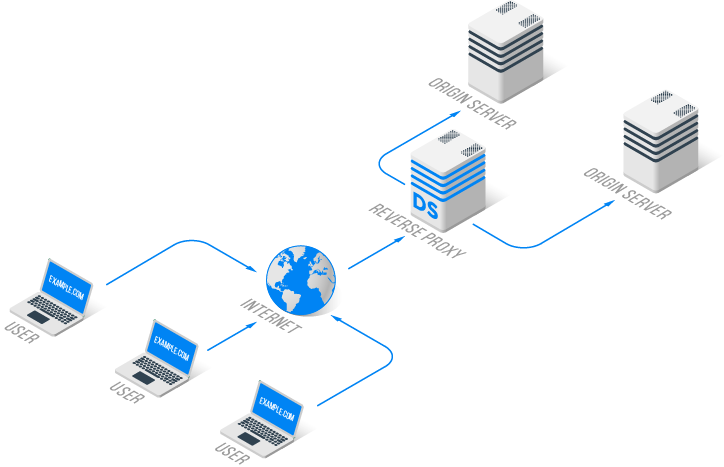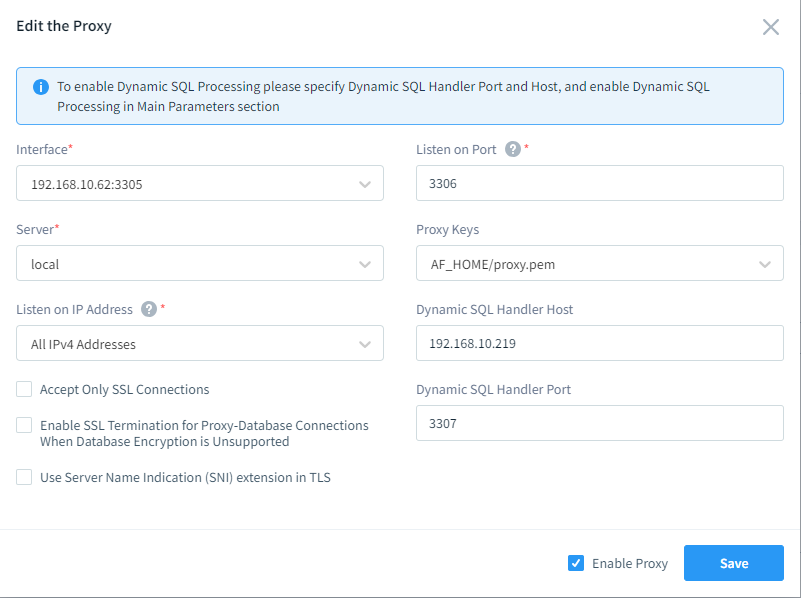
Reverse Proxy
Introduction
In today’s digital landscape, proxy servers play a crucial role in enhancing security, performance, and flexibility of web applications. A reverse proxy enhances and protects web services. This article will explain what a reverse proxy is and how it works, and compare to forward proxy.
What is a Reverse Proxy?
A reverse proxy is a server that helps client devices communicate with web servers by acting as a middleman. A forward proxy helps clients connect to the internet. A reverse proxy assists web servers in managing requests from clients.
When a client makes a request to a web server, a reverse proxy intercepts the request. The reverse proxy then processes the request before forwarding it to the appropriate web server.
Reverse Proxy vs Forward Proxy
To better understand reverse proxy, let’s compare it with forward proxy:
- Functionality:
- Forward: Acts as an intermediary for client requests, allowing clients to access the internet anonymously and bypass restrictions.
- Reverse: Acts as an intermediary for web server responses, providing an additional layer of security and performance optimization.
- Visibility:
- Forward: Visible to clients, who must configure their devices to use the proxy.
- Reverse: Transparent to clients, who interact with the reverse proxy as if it were the actual web server.
- Purpose:
- Forward: Protects client privacy, filters content, and bypasses geographic restrictions.
- Reverse: Enhances web server security, distributes traffic, and improves performance through caching and compression.

Examples of Reverse Proxy:
- Load Balancing:
- Scenario: A popular e-commerce website experiences high traffic during peak hours.
- Solution: A reverse proxy helps spread out requests to different web servers, making sure they work well and don’t get overwhelmed.
- Result: The website remains responsive and available even during high traffic periods.
- SSL Termination:
- Scenario: An organization wants to secure its web application with SSL/TLS encryption.
- Solution: A reverse proxy manages SSL/TLS termination, taking on the encryption and decryption tasks from the web servers.
- Result: The web servers can focus on serving content while the reverse proxy handles the secure communication with clients.
- Access Control:
- Scenario: A company wants to restrict access to certain web resources based on user roles.
- Solution: A reverse proxy checks user requests before sending them to the correct web servers.
- Result: Only authorized users can access the restricted resources, enhancing the security of the web application.
DataSunrise and Reverse Proxy
DataSunrise is a top provider of data management solutions. They use proxy technology to provide great tools for data security, audit rules, masking, and compliance. DataSunrise works in reverse proxy mode for most databases, enabling seamless integration and robust data protection.
DataSunrise can watch what happens in databases and hide information in different file types. Places such as Amazon S3, Alibaba OSS, or Minio store the data. A reverse proxy hides DataSunrise from clients. Customers can utilize the S3 bucket as though they have a direct connection.
Creating a Proxy with DataSunrise
To make a proxy with DataSunrise, you will need a network interface. You will also need an IP address or a range of IP addresses. Additionally, you will need an available port on your DataSunrise server. To make many proxies with one IP address, each proxy needs its own port to prevent problems.
DataSunrise lets you make multiple proxies in each Database Instance. These proxies can listen for incoming database connections on certain ports. This flexibility ensures that you can efficiently manage and monitor database traffic based on your specific requirements.
Configure a Proxy with DataSunrise
When configuring a proxy in DataSunrise, you’ll need to specify the following parameters:

- Interface:
- The interface consists of the host IP address and the frontend port.
- The host IP address represents the IP address of your DataSunrise server.
- The frontend port is the port number on which the proxy will listen for incoming database connections from clients.
- Listen on Port:
- The listen on port, also known as the backend port, is where the proxy sends database connections to the database server.
- This port number should match the port configured on your database server to ensure proper communication.
- Server:
- The server parameter lets you choose the database server where the proxy will send the connections.
- DataSunrise usually uses the local server, but you can also set it up to connect to remote database servers.
- Proxy Keys:
- Proxy keys refer to the configuration file that holds the settings for the proxy.
- This file contains various parameters and options that determine the behavior and functionality of the proxy.
- DataSunrise provides a user-friendly interface to manage and modify these proxy configuration files.
- Listen on IP Addresses:
- DataSunrise allows you to specify the IP addresses that the proxy should listen on.
- By default, DataSunrise listens on all available IP addresses assigned to the server.
- You can choose to limit the proxy to listen only on specific IP addresses or ranges. This can help meet your security and network requirements.
By configuring these parameters accurately, you can create a robust and secure proxy setup using DataSunrise. You can set up multiple proxies in one instance. This allows you to assign them to different IP addresses and ports. Doing this gives you more control over your database traffic.
Conclusion
Reverse proxy is a powerful tool in the arsenal of web application security and performance optimization. Organizations can improve their web services by using proxy. You can do this by understanding the basics, comparing it to forward proxy, and looking at real-world examples.
DataSunrise helps you secure and improve communication in databases, whether you have one or many. Its proxy feature allows for safe and efficient data transfer.
Contact our team for an online demo session to see DataSunrise in action with its powerful reverse proxy capabilities. Discover how DataSunrise can revolutionize your data management strategies and ensure the highest level of security and compliance.
DataSunrise, with its exceptional data management solutions, harnesses the potential of reverse proxy to provide unparalleled security and flexibility.
